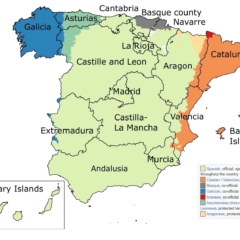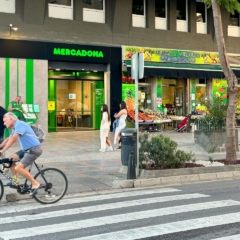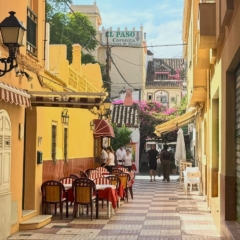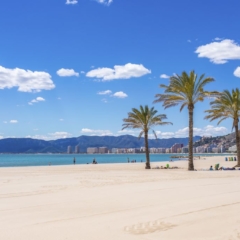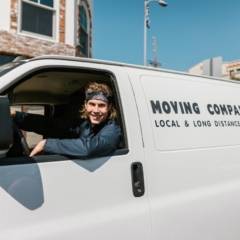Moving from the US to Spain – lessons learned
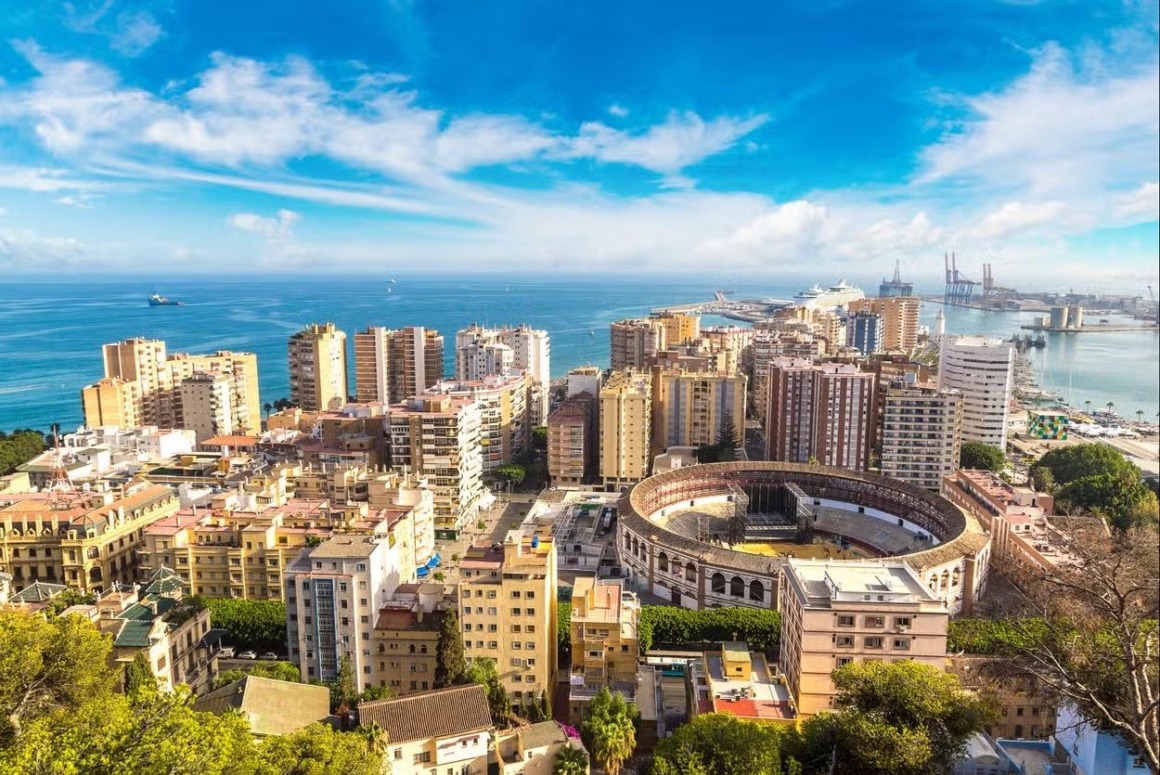
Every now and then we hear stories of people moving from the US to Spain. Most of them are happy stories, with newcomers very happy with their new life in Spain; some people, though, end up going back to the USA after a few years; all of them share tales of surprises and unexpected cultural shocks – some good, some not.
In this post we collected three stories of families moving from the US to Spain – two happy and one unsuccessful – and point out what worked, what didn’t, the main surprises and how to prepare so that your own story counts as one of the happy ones!
From Florida to Valencia and then to Malaga
Greg and Gail Warner moved from Florida to Valencia in 2018 with their dog, Beau. Their story has been published by CNN Travel, so we will retell here just the main parts: they didn’t speak Spanish but improved over the years living in Spain; they managed to make friends by joining sports (padel) and because of Beau. After 5 years living in Valencia, they decided to relocate further south, to Malaga, and can’t imagine going back to the US to live. They regret not moving earlier.
Good surprises: affordable and high-quality healthcare; friendliness of people and local attitude of enjoying life; community feeling and lack of need to impress others by showing off material possessions.
Bad surprises: everything closes during the siesta; late lunch and dinner times
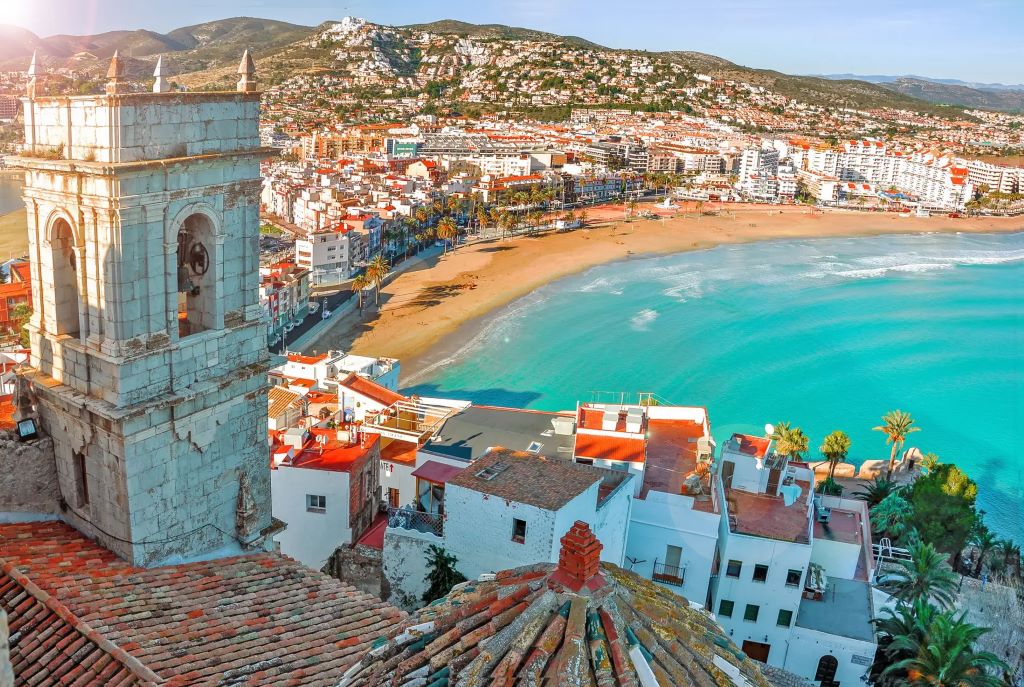
Why did it work for them?
From reading their story, I believe moving from the US to Spain worked for Greg and Gail because:
- They did good research ahead of moving, and chose a nice, lively place to live – Valencia – a large city with great climate where most of the amenities they were used to were at hand.
- They do mention in their story that they are surprised by people that resent not finding the exact goods they were used to buy before the move (like soft pretzels, that they refer as an example), so I would add that they had the right mindset for the move – knowing that there will be differences and being able to adapt to them increases the rate of success dramatically.
- They had a dog and played padel. Having a dog (or a kid) helps making friends in the beginning; joining local clubs, such as their padel group, also helps socializing. These are not the only ways – obviously! – but it is helpful to think of ways to get to know locals. Greg and Gail social group includes other foreigners – from the US, Canada and France – and Spaniards.
Related posts:
Siesta in Spain – the cultural icon that stops street commerce
Thing to know when in Spain
From Florida to Cantabria
Cristina Martinez moved with her husband from Florida to Cantabria, in the north of Spain, in 2022. Their story also has been published by CNN Travel, so we will retell here just the main parts: they knew the area, as they had vacationed there several times, but could not adapt to live in the countryside with lots of rain, cloudy days and lack of air conditioning in the summer. Cristina also got tired of the food and of the siesta. They considered moving to the south of Spain but were afraid of leaving the house empty, because of squatters.
Good surprises: the pretty, green scenery in the north of Spain; peaceful and low crime area.
Bad surprises: the rainy weather in the north of Spain; the lack of air conditioning in the countryside; fear of squatters (okupas); high property sales taxes; business closed during siesta times; greasy, unhealthy food; closed culture.
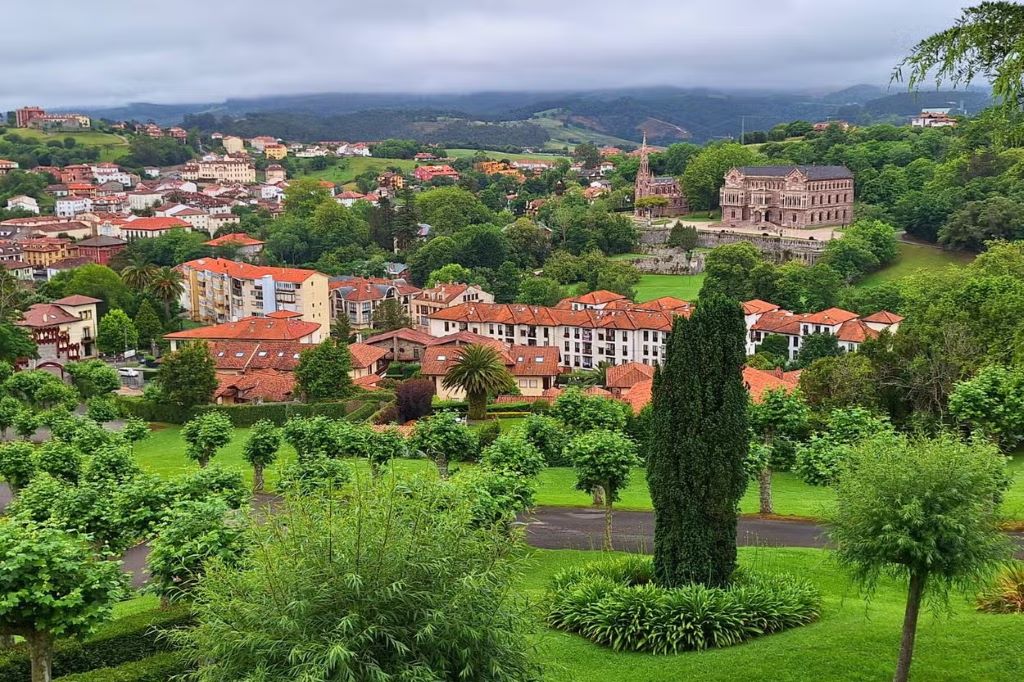
Why didn’t it work for them?
- It seems to me that their main problem stems from poor research of the location. Cristina had travelled to the area before, but probably on summer and to a large city (Santander) – but had no idea of how much it rains there (and it does rain a lot in the north of Spain; that’s why it is so green and pretty!) nor that the winters can be quite cold there.
- Moreover, she bought a house in the countryside – not in a city. Therefore, the big change in lifestyle, from Miami to rural, agricultural Cantabria was too much, probably more than she anticipated, and therefore, much harder to adapt than if she had moved to a city. I don’t quite get the complaint about lack of air-conditioning; considering she bought the place, I think she could just have installed one.
- Once she realized she didn’t like the area, she considered moving to the south, but didn’t do it fearing the house could be invaded by squatters (okupas). That’s a valid fear, and one of the reasons why choosing the right area before buying is important. Another reason has to do with property sales taxes, that are high in Spain and vary from one area to another. One can easily add 10% to the asked property price in taxes; the text mentions +18%! If she had moved within Spain, she would have paid those taxes twice – I can see how it can be frustrating.
- The siesta-that-closes-commerce is a common complaint about Spain – I feel it, I have the same problem, as we’ll see next. I can imagine that being in a rural, isolated area this can be an even bigger problem than in a town or in a city. I think the next two problems this family encountered – the food and “closed culture” also have a lot to do with the rural area where they found themselves. Surely a rural area will offer less variety of restaurants and smaller markets than a city; and with less people around, mostly dedicated to rural life – a very different background from the Miami couple – socializing would be harder than in an urban environment.
Related posts:
Where to live in Spain as an expat
Okupas
Buying vs. renting before moving
Our unusual perspective on renting vs. buying after arriving
Life in the Spanish Countryside
From Texas to Malaga
Our own experience! We moved from Houston, Texas, to Benalmádena, Málaga, in 2022. The stories about our move are all over this site, but mainly in the Moving to Spain area. In short, we did a lot of research before moving, both online (which ended up inspiring me to write this blog, as I couldn’t find everything I wanted) and “inner” – asking ourselves what we wanted from the place we would call home.
I got very specific on this matter: I wanted to live in a small city close to a big one, with beautiful beaches, good schools and a lively environment. Hubby just wanted a place with internet, and Kiddo wanted a pool. We got everything we wanted. 🙂
Good surprises: the fact that Benalmadena (as the rest of the Costa del Sol) has a large expat community was certainly great. I knew it before from my online searches, but I didn’t think of it as either good or bad; it just turned out to be great because 1) Kiddo’s public school is bilingual and having English speaking friends helped ease his adaptation and 2) we made friends with the parents of Kiddo’s friends, which are also English speakers, a big plus considering that Hubby, to this day, doesn’t speak Spanish. The events that happen all over the Costa – Ferias, Carnival, Halloween, Christmas – are also better than I imagined.
Bad surprises: the strictness of the teacher in the private school Kiddo attended on his first semester in Spain; everything closed during siesta hours.
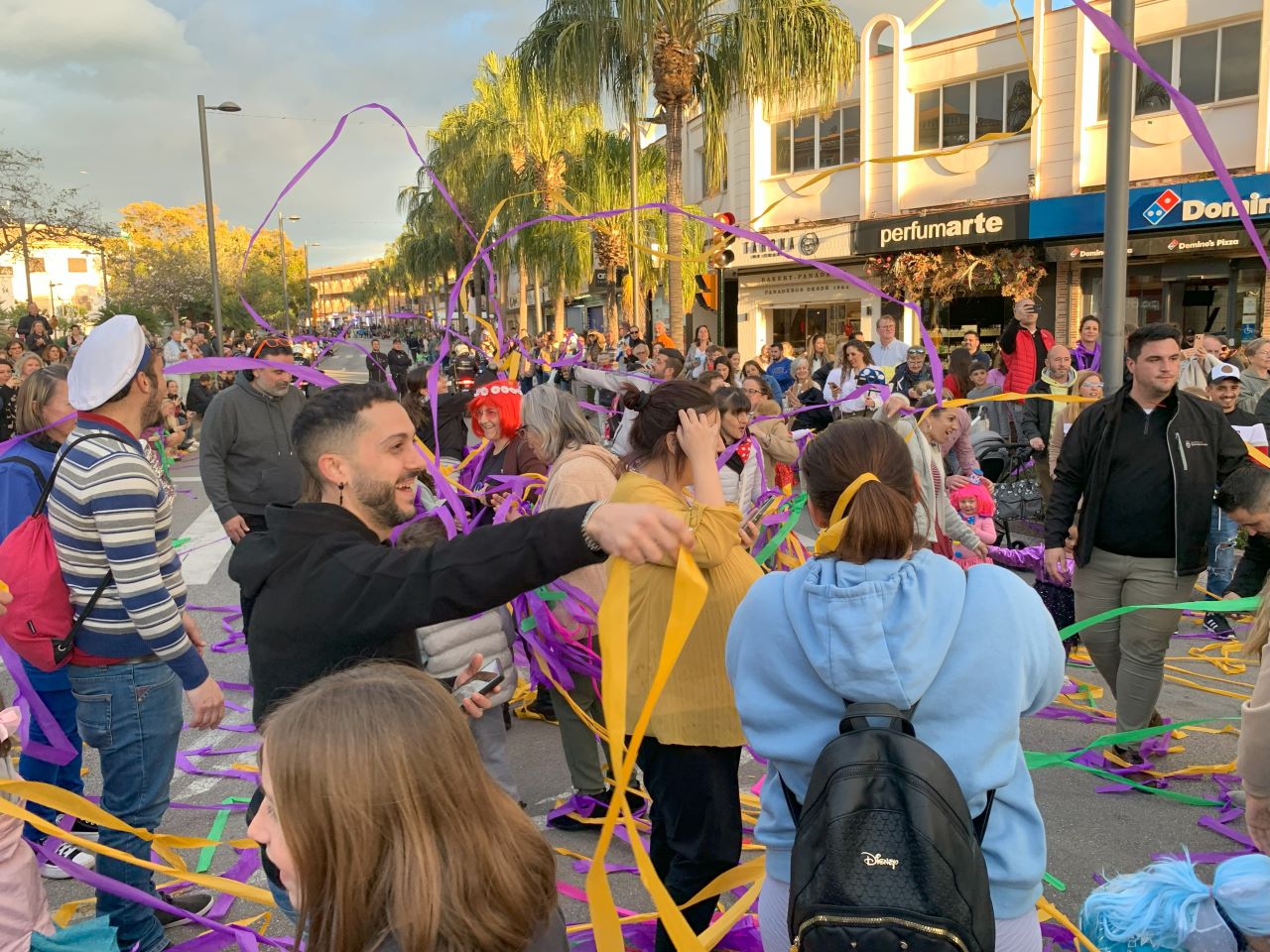
Why did it work for us?
- We knew what we wanted. People often start looking for a place on a map, or thinking about the weather, but a successful relocation starts by asking yourself (and your loved ones) what you (them) want from the place you gonna move to.
- When we found interesting places, we wanted to know more about them – how are the schools? And the hospitals? And summer? And how hilly is the area? How much does an apartment cost? We searched the places online extensively.
- We were seasoned movers. My previous work required me / us to relocate a lot, and Spain is the 4th country where I have lived. We were fully aware that things would be different from the places where we lived before in ways we could not anticipate, and that some adaptation was inevitable. I actually expected more surprises, but I guess there weren’t so many!
- The siesta thing really got us in our first months, when we couldn’t find any paper shop open to make copies of documents (and didn’t realize they would be open if I just tried after 5 pm), but now we know and work around it – adaptation. Plus, the supermarket is open during siesta hours, as are the shopping centers in Malaga – nothing like living close to a big city!!
Related posts:
Is Spain full of foreigners?
Our mixed experience with schools in Spain
Finding our home in Spain
Spoiler alert: your first months in Spain
Best places for families to live in the Costa del Sol
Conclusion and Final tips
Moving to another country is something big and requires preparation. A place that is good for vacation does not necessarily is a good place to live – it may well be, but there is more to choosing a place to live than just a beautiful environment.
The first and foremost question is asking yourself what makes a place good to live. What are your non-negotiables? Are you a very sociable person or would you rather be more on your own? How much heat or cold is acceptable? What about rain? Be specific on your answers. Do you prefer large cities with all the amenities and their downsides – pollution, crime – or smaller cities? Or a rural area?
Then, think of practical considerations: if you are moving with kids, schools are very important; if you are coming on your retirement years, then being close to a hospital, I’m afraid, is a smart choice. Check if the place is hilly or flat, too; hilly places offer gorgeous views, but are difficult to walk around, while flat places are the opposite. Which suits you better?
Look at the prices of real state on idealista.com. Be it for rent or for purchase, almost everybody in Spain announces there, so it can give you a good idea of prices in any area you choose. For the cost of life overall, check our post about it!
We are social beings and, for most of us, humans, having friends makes life a lot better. If that is true for you too, include some strategies for making friends in your new place. Dogs and kids help but so do participating in sport activities and studying the local language, or taking some arts courses – anything that puts you in contact with people around you will do. Lively places with large expat communities also tend to have all sort of gatherings, easy to find through social media – Facebook groups are full of events open to anyone.
A lot of thought and some online searches go a long way and can make the difference when choosing if moving from the US to Spain is a good idea for you. I am biased, but I think it is. 😛 Best of thoughts and good relocation!
